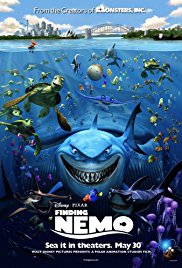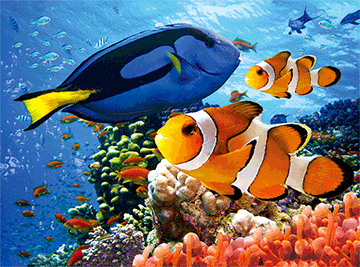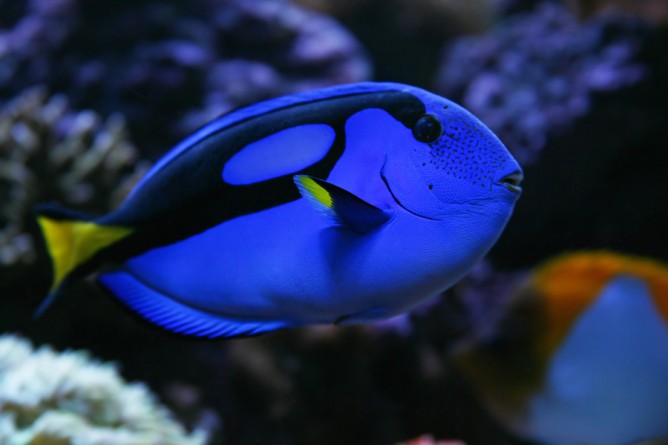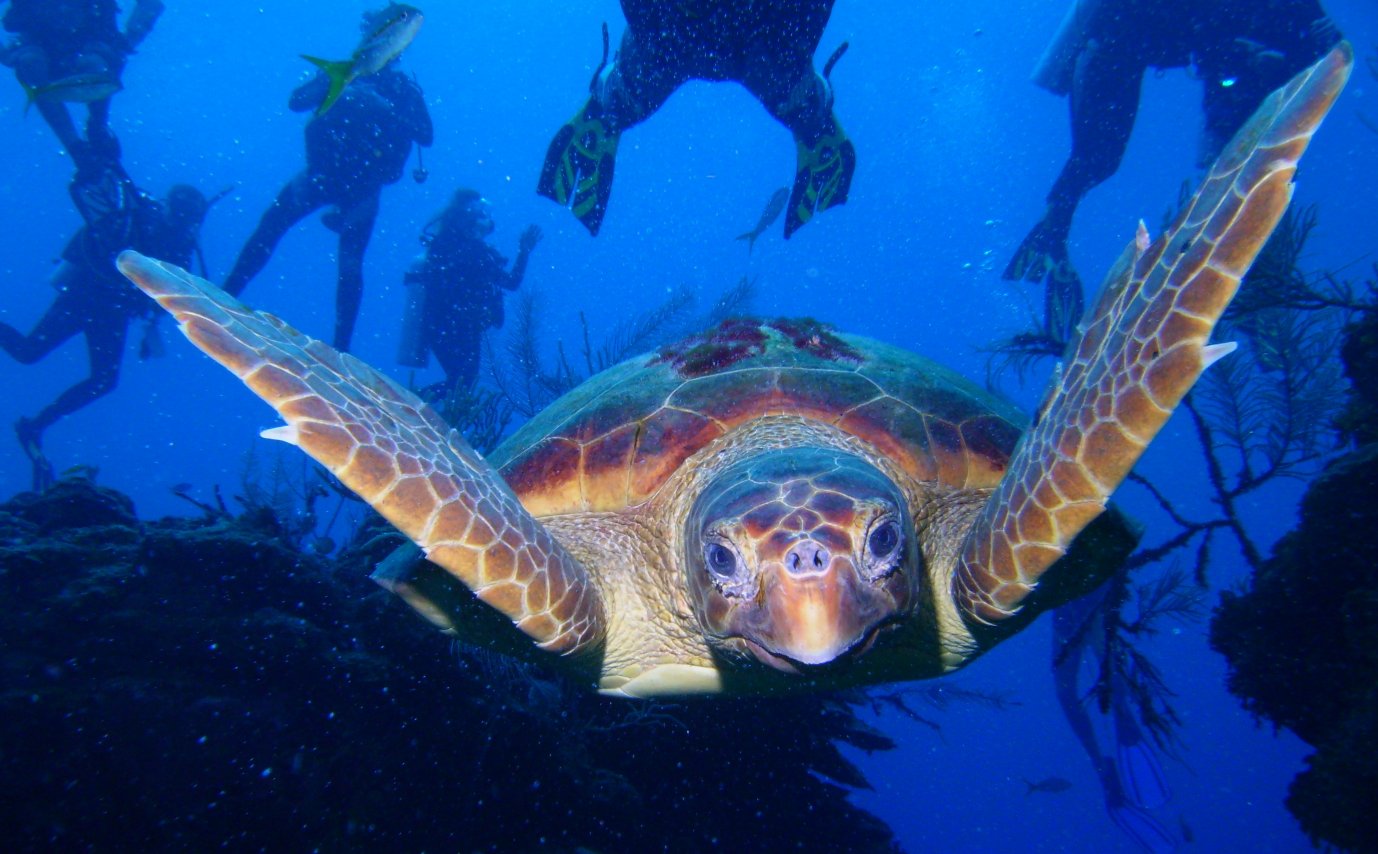1. See Discussion Questions for Use With any Film that is a Work of Fiction.
2. The tentacles of anemones are poisonous for any fish. How can the clownfish live among them?
Suggested Response:
Clownfish are not immune to the poison in the anemone’s tentacles and at first appear to be stung by them. Scientists believe that by dancing up against the tentacles for a time clownfish develop a protective mucous covering.
3. Anemones and clownfish have what is called a “symbiotic relationship.” Tell us what it means using anemones and clownfish as an example.
Suggested Response:
The anemone protects the clownfish from predators. The clownfish helps the anemone by eating leftovers from fish consumed by anemone, planktonic crustaceans, and algae. Clownfish also eat the dead tentacles of their host anemone. Eggs are laid in large batches, usually near and sometimes within the host anemone.
4. Some people call clownfish by another name. What is the name and why is it applied to clownfish?
Suggested Response:
See the Helpful Background section on clownfish.
5. The blue tang is part of the surgeonfish family of fish. Why are they called surgeonfish?
Suggested Response:
See Helpful Background section on blue tangs.
6. How big do loggerhead turtles usually grow and how much do they usually weigh?
Suggested Response:
See Helpful Background section on loggerhead turtles.
7. What is the usual life span of a loggerhead turtle?
Suggested Response:
See Helpful Background section on loggerhead turtles.
8. How far can loggerhead turtles travel in their migrations?
Suggested Response:
See Helpful Background section on loggerhead turtles.
9. How long can loggerhead turtles stay underwater while resting and while swimming?
Suggested Response:
See Helpful Background section on loggerhead turtles.
10. Why were loggerhead turtles given that name?
Suggested Response:
See Helpful Background section on loggerhead turtles.
11. What is the East Australia Current?
Suggested Response:
See the Helpful Background section on the East Australia Current.
Concepts from Biology
12. What is the food chain?
Suggested Response:
See the discussion of the food chain in the Helpful Background section.
13. What is the base of the food chain in the ocean?
Suggested Response:
Phytoplankton, also called algae. See the discussion of the food chain in the Helpful Background section.
14. When is it said that an animal is at the top of its food chain?
Suggested Response:
When it has no natural predators. See discussion of the food chain in the Helpful Background section.
15. What does “crepuscular” mean?
Suggested Response:
It describes animals that are active at dawn or at dusk.
16. Why are predators often particularly active at dusk?
Suggested Response:
See discussion in Helpful Background section under Concepts from Biology.
17. When is a “diurnal” animal awake?
Suggested Response:
During the day. Diurnal animals sleep at night.
18. What is the difference between a diurnal animal and a nocturnal animal?
Suggested Response:
Diurnal animals are awake during the day and nocturnal animals are active at night.
19. What must a predator have in order to be successful?
Suggested Response:
Some advantage over its prey.
20. What is the difference between phytoplankton and zooplankton? Why are they both called “plankton”?
Suggested Response:
Phytoplankton get energy through photosynthesis. Zooplankton eat phytoplankton. They are both microscopic. Zooplankton includes single celled animals, larvae of larger animals, and tiny crustaceans. The term “plankton” comes from the Greek word “planktos” which means “drifting.”
21. Why do phytoplankton stay near the surface of the ocean?
Suggested Response:
They need sunlight to make energy through photosynthesis.
22. Define the words “predator” and “prey” and apply these terms to phytoplankton and zooplankton.
Suggested Response:
Phytoplankton are the prey and zooplankton are the predator, i.e., phytoplankton are eaten by zooplankton.
23. Which species is higher on the food chain, phytoplankton or zooplankton?
Suggested Response:
Zooplankton, because they eat phytoplankton.
24. Describe three symbiotic relationships between animals on a coral reef.
Suggested Response:
See discussion of symbiosis in Helpful Background section.
25. How does a predator actually help the species of its prey?
Suggested Response:
By killing off weaker animals, it helps keep the species of the prey strong. Weaker animals cannot survive and bear young and so the gene pool of the prey will self-select for stronger individuals.
26. In the struggle between predator and prey is it always important for the individual prey to survive?
Suggested Response:
No. The key point is for the species to survive. Thus, it is better for the species of the prey if weak individuals are killed off by the predators before they can have young. Some prey use a strategy of survival in which they have many young who quickly disperse. Most will not survive but a few will.
27. Do sharks and the fish they eat have a symbiotic relationship?
Suggested Response:
No. The fish gets eaten and the individual fish gets nothing from the exchange. A symbiotic relationship is when individuals in each species benefit from the interaction.
28. Describe how several types of coloration used by prey animals help them survive. Name at least two.
Suggested Response:
The possibilities are camouflage, eyespots, disruptive coloration, colors that warn of poison, etc. See discussion of coloration in Helpful Background section.
29. What are the differences between a “commensal” relationship, a “symbiotic” relationship, and a “parasitic” relationship?
Suggested Response:
In a symbiotic relationship, both animals benefit. In a commensal relationship, one animal benefits while the other is not benefitted from the relationship but is not harmed. In a parasitic relationship, one party benefits and the other is harmed.
Corals and Coral Reefs
30. What is the relationship between zooxanthellae and coral polyps?
Suggested Response:
See definition of “symbiosis” in the Helpful Background section.
31. What are the different parts of a coral’s body and what are their uses?
Suggested Response:
See discussion of corals and coral reefs in the Helpful Background section.
32. How is a coral reef built?
Suggested Response:
When a coral polyp dies, other coral animals begin to live on top of its body. The skeletons of dead coral plants, one on top of another, build up the reef. Reefs grow slowly. It can take 50 years for a coral colony to grow three feet (about 90 centimeters). See discussion of corals and coral reefs in the Helpful Background section.
33. Describe the water in which coral reefs are found?
Suggested Response:
In clean, salty, shallow water (less than 250 feet deep) where there is a lot of sunlight and warm weather. Almost all coral reefs are found near the equator (A good follow-up question is to ask why the earth is warmer at the equator than at other regions. The answer is that at the equator the sun is directly overhead while in other parts of the world the rays of the sun hit the earth at an angle and must pass through more of the atmosphere to reach the earth than at the equator. Dust and atmospheric chemicals such as ozone, water vapor and carbon dioxide absorb sunlight and weaken the rays of the sun.)
34. In which oceans are coral reefs found?
Suggested Response:
The Indian, Atlantic, and Pacific oceans.
35. What are the three kinds of reefs and how are they different?
Suggested Response:
Fringing reefs extend from the shore to the sea. At times they have a narrow stretch of water between the land and the reef. A barrier reef forms several miles out to sea and creates a barrier between land and sea. The third kind of reef is an atoll. These are shaped like a ring and lie in the open sea. Some are even large enough for people to live on.
36. What is the largest barrier reef in the world? How big is it?
Suggested Response:
The Great Barrier Reef in Australia. It is more than 1,250 miles long (2,012 kilometers) and is made up of about 2,500 small reefs and coral islands.
37. Name two enemies of coral reefs.
Suggested Response:
One is a starfish called the crown of thorns. In one day, it can eat the coral polyps in an area the size of a dollar bill. Storms that can break up a coral reef with the force of wave action are another enemy of the reefs. Mankind, through overfishing and pollution, is a third enemy.
38. Is coral an animal or a plant?
Suggested Response:
It’s an animal.
39. What are baby coral called and how do they grow?
Suggested Response:
They are called larvae. They spread out along the ocean floor and attach to something, such as the skeleton of a dead coral or a rock.
40. What do corals eat?
Suggested Response:
Some coral eat zooplankton, tiny, microscopic animals that float in the ocean water around the reefs.
41. Do corals have a backbone?
Suggested Response:
No.
42. Do corals have a brain?
Suggested Response:
No.
43. Do all corals build reefs?
Suggested Response:
No. In fact, most corals don’t. There are 2,500 different kinds of corals and only 650 of them are the stony corals that build reefs.
44. What is the process by which corals are said to “bud?”
Suggested Response:
A bump will form on a polyp and a new polyp will grow on it. Each new polyp will form a limestone cup around itself attached to the cup of the old polyp. As the old polyp dies, the new polyp continues to grow until it grows a new bud which becomes a new polyp, and so on. In this way new polyps grow on top of the old ones and the reef increases is size.
45. What makes coral hard and where do corals get this substance?
Suggested Response:
Calcium, just like the calcium in our bones, makes corals hard. The corals get the calcium from seawater and make calcium carbonate, also called limestone.
46. What happens to a coral reef at night?
Suggested Response:
A different set of animals come out, animals that do not depend upon sight. The coral are nocturnal animals, keeping their mouths and tentacles withdrawn during the day. Other nocturnal feeders are tube worms, featherdusters, crabs, spiny lobsters, squirrelfish, grunts, eels, and octopuses.
47. How long does it take a coral plant to grow into a reef?
Suggested Response:
Thousands and thousands of years.
48. What is coral bleaching and what does it mean?
Suggested Response:
See the Helpful Background section.
49. Will it hurt a coral reef for you to walk on it?
Suggested Response:
Yes. You will be crushing the coral and killing the animals.
50. If you buy a coral reef animal, a fish or a crab, in a pet store, are you hurting the reef?
Suggested Response:
Yes. The demand for coral reef fish, causes fishermen to go out to the reefs to capture the reef animals. They deplete the fish population and often injure the reef. The only way to stop this is for people to stop buying reef animals. There will then be no reason for the fishermen to go out the reefs.
51. Give three examples of reef fish who use camouflage as a survival technique.
Suggested Response:
The flat bodied flounder blends into the sandy bottom of the sea. The scorpion fish looks like a part of the coral reef. The trumpet fish will appear to be a frond of a trumpet coral and wave in ocean currents just like a trumpet coral.
Other Animals that Live on the Reef
52. Is a sponge a plant or an animal?
Suggested Response:
Although it looks like a plant, a sponge is an animal.
53. How do sponges eat?
Suggested Response:
As the water flows through the sponge, it filters the water and collects its food.
54. What are anemones?
Suggested Response:
Animals that attach to corals and sometimes to crabs. They have poisonous tentacles which sting their prey and draw them into the anemone’s mouth.
55. How does a starfish eat?
Suggested Response:
It shoves its stomach out through its mouth. The stomach covers the food and softens it with its digestive juices. When the food is soft enough the starfish takes the food into its stomach which it then pulls back into its body.
56. What will happen if another fish eats one of the arms of a starfish?
Suggested Response:
It will grow a new one. Some starfish can regenerate their entire bodies from one little fragment.







